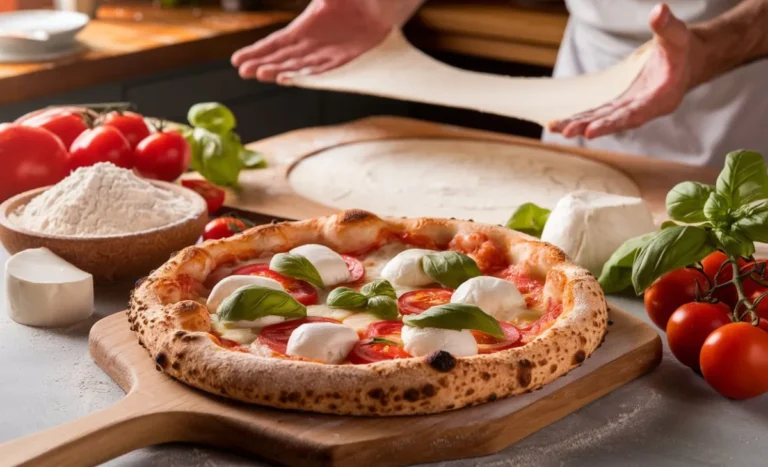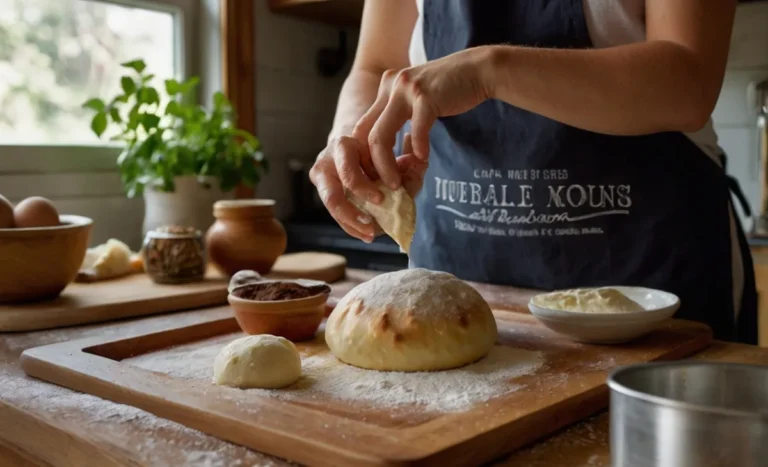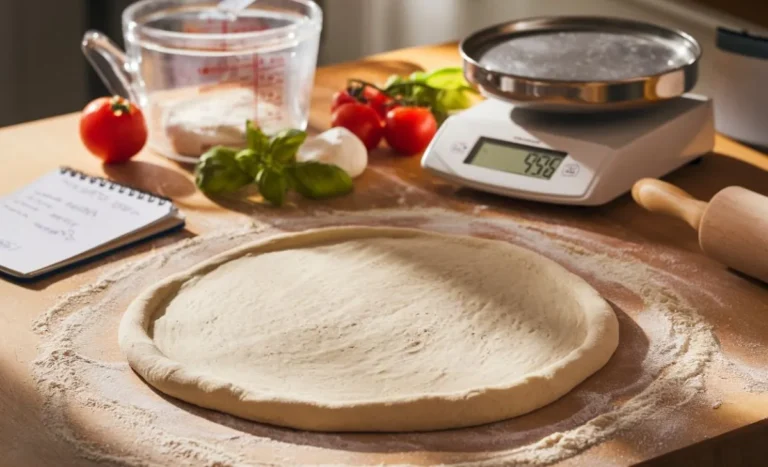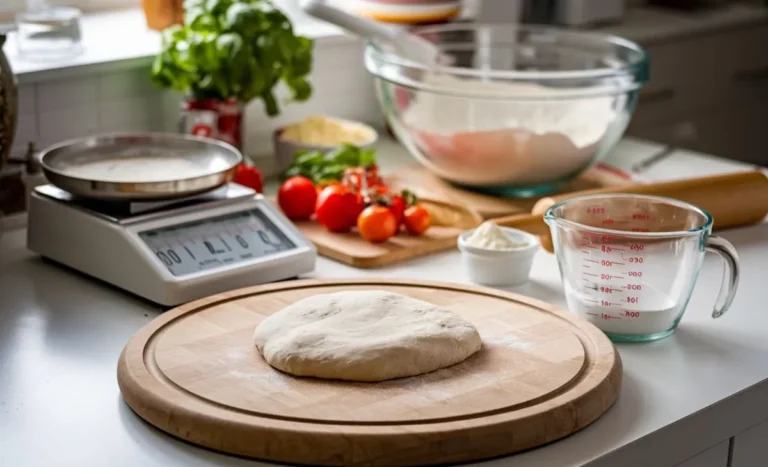Mastering Homemade Pizza: The Ultimate Guide to Choosing the Right Pizza Flour
Understanding Different Types of Pizza Flour
Understanding different types of pizza flour is essential for mastering homemade pizza. Each flour type brings unique properties that can affect the dough’s texture, flavor, and overall quality. By selecting the right pizza flour, you can elevate your pizza game and create the perfect crust. Let’s explore the most common flour types and how they influence your pizza-making journey.
00 flour is a favorite among pizza enthusiasts, particularly for Neapolitan-style pizzas. This finely milled flour has a high protein content, which creates a chewy, yet soft crust. When used correctly, it allows for excellent elasticity and stretch. Additionally, 00 flour absorbs water well, resulting in a beautifully hydrated dough. This makes it ideal for high-temperature baking, often found in wood-fired ovens.
On the other hand, bread flour is another popular option. With a higher gluten content than all-purpose flour, it yields a crust that is chewy and sturdy. This flour is perfect for creating New York-style pizzas, which require a bit more strength to support various toppings. When using bread flour, the dough will rise nicely, giving you a thick and satisfying crust that holds up well under pressure.
Finally, whole wheat flour offers a healthier alternative with added nutrients and fiber. This flour creates a denser crust with a nutty flavor, appealing to those looking for a more wholesome option. While it can be mixed with all-purpose flour for a lighter texture, whole wheat flour can also stand alone. Understanding these different types of pizza flour empowers you to experiment and find the perfect fit for your homemade pizzas!
The Importance of Gluten Content in Pizza Flour
The gluten content in pizza flour plays a crucial role in the texture and structure of your pizza dough. Gluten is a protein that develops when flour is mixed with water and kneaded. This elasticity is vital for creating a chewy crust that can hold toppings without becoming soggy. Understanding gluten’s importance helps you choose the right pizza flour for your desired outcome.
High-gluten flours, such as bread flour, contain more protein, leading to stronger gluten development. This results in a firmer and chewier crust, perfect for New York-style pizza. The increased gluten structure allows the dough to rise effectively, providing a robust base that supports various toppings. When you want a pizza that stands up to hearty ingredients, high-gluten flour is your best bet.
Conversely, lower-gluten flours, like cake or all-purpose flour, produce a softer crust. While these flours can work for certain pizza styles, they may not yield the desired texture for traditional pizza. Therefore, it’s essential to consider the flour’s gluten content based on the pizza style you aim to create. By selecting the right flour, you ensure that your crust will have the ideal bite and chewiness.
Ultimately, the right gluten content contributes significantly to the overall quality of your homemade pizza. Experimenting with different pizza flours allows you to find the perfect balance of chewiness and tenderness. As you master the art of pizza-making, remember that understanding gluten will guide your flour choices and elevate your pizza experience!
How to Choose the Best Pizza Flour for Your Style
Choosing the best pizza flour for your style is essential for creating the perfect crust. Different pizza styles require varying dough characteristics, which depend significantly on the type of flour used. By understanding your pizza preferences, you can select the right pizza flour to achieve the desired texture and flavor. This decision ultimately enhances your homemade pizza experience.
For Neapolitan-style pizzas, 00 flour is often the ideal choice. This finely milled flour boasts a high protein content, promoting excellent elasticity and a chewy crust. When baked at high temperatures, it creates a light, airy texture that’s characteristic of authentic Neapolitan pizza. If you’re aiming for that classic Italian experience, 00 flour should be at the top of your list.
If you prefer a thicker, chewier crust, bread flour is an excellent option. With its higher gluten content, this flour provides the strength needed to support heavy toppings. Bread flour creates a satisfying bite and works well for New York-style pizzas. When selecting pizza flour for this style, bread flour guarantees a sturdy foundation for all your favorite ingredients.
Finally, consider your dietary preferences when choosing pizza flour. Whole wheat flour offers a nutritious alternative with added fiber and nutrients. While it produces a denser crust, it can be blended with other flours for a balanced texture. By understanding your pizza style and the characteristics of different flours, you can confidently select the best pizza flour to elevate your homemade creations!
Tips for Storing Pizza Flour Properly
Storing pizza flour properly is essential to maintain its quality and freshness. When flour is stored incorrectly, it can lose flavor and become less effective for baking. Therefore, understanding the best storage methods for pizza flour can significantly impact your pizza-making experience. By following these tips, you can ensure that your flour stays fresh and ready for delicious homemade pizzas.
First, it’s crucial to keep pizza flour in an airtight container. Exposure to air can lead to moisture absorption and spoilage. Choose a container made of glass or food-grade plastic that seals tightly. Additionally, label the container with the type of flour and the purchase date. This practice helps you track freshness and ensures you use the flour before it expires.
Next, consider the storage location for your pizza flour. Ideally, keep it in a cool, dark place, such as a pantry or a cupboard. Heat and sunlight can degrade the quality of the flour over time. Avoid storing it near the stove or other heat sources. By placing it in a stable environment, you preserve its flavor and usability.
Finally, if you purchase flour in bulk, you might want to refrigerate or freeze it for long-term storage. This method helps prevent pest infestations and keeps the flour fresh for an extended period. Before using refrigerated flour, allow it to reach room temperature to avoid moisture issues. By following these storage tips, you can ensure your pizza flour remains in optimal condition, ready for your next homemade pizza night!
Experimenting with Blending Flours for Unique Crusts
Experimenting with blending flours can elevate your pizza-making game and lead to unique crusts. By combining different types of pizza flour, you can create textures and flavors that suit your personal preferences. This approach not only enhances the taste but also allows for creativity in your homemade pizzas. With a little experimentation, you can discover a perfect blend that yields a crust unlike any other.
One popular blend is combining all-purpose flour with whole wheat flour. This combination offers the best of both worlds: the structure and chewiness of all-purpose flour paired with the nutty flavor and added nutrients of whole wheat. When you mix these flours, aim for a ratio that suits your taste. A 50-50 blend is a great starting point, allowing you to enjoy the benefits of both while still achieving a satisfying crust.
Another interesting blend involves using semolina flour alongside bread flour. Semolina flour adds a delightful texture and a slightly golden color to your crust. This combination works especially well for thicker crusts, providing both flavor and sturdiness. When experimenting with different ratios, you might find that even a small addition of semolina can significantly enhance your pizza’s overall quality.
Finally, don’t hesitate to explore gluten-free options if dietary needs arise. Blending rice flour, almond flour, or chickpea flour can create a delicious gluten-free pizza crust. However, gluten-free flours often require additional binding agents like xanthan gum to achieve the right texture. By experimenting with various flour combinations, you can unlock new flavors and textures, making your pizza-making adventures even more enjoyable!
Common Mistakes When Using Pizza Flour
Using pizza flour effectively is crucial for achieving the perfect crust. However, many home cooks make common mistakes that can hinder their results. By understanding these pitfalls, you can improve your pizza-making skills and create delicious homemade pies. Avoiding these errors will help you maximize the potential of your chosen pizza flour.
One common mistake is not measuring the flour correctly. Too much or too little flour can drastically affect the dough’s texture and consistency. For best results, use a kitchen scale for precise measurements. Additionally, remember to spoon the flour into your measuring cup rather than scooping directly from the bag. This technique prevents packing and ensures an accurate amount of pizza flour.
Another frequent error is neglecting to let the dough rest adequately. Allowing the dough to rest is essential for gluten development, which leads to a chewier and more flavorful crust. If you skip this step or rush the process, your pizza may turn out dense and unappetizing. Ideally, let your dough rest for at least 30 minutes before shaping it. This simple adjustment can make a significant difference in the final product.
Finally, many home cooks forget to preheat their oven properly. Cooking pizza at a high temperature is vital for achieving that crispy, golden crust. If your oven isn’t hot enough, the pizza will not cook evenly, resulting in a soggy bottom. Always preheat your oven to the highest setting and consider using a pizza stone or steel for optimal heat retention. By avoiding these common mistakes, you can elevate your pizza-making and enjoy mouthwatering results!
Recipes to Try with Your Chosen Pizza Flour
Choosing the right pizza flour can transform your homemade pizzas. With various types available, each offers unique flavors and textures. Once you’ve selected your ideal flour, it’s time to explore delicious recipes that showcase its potential. Here are a few recipes to try, complete with step-by-step cooking instructions.

Classic Margherita Pizza
Ingredients:
- 2 cups pizza flour
- 1 cup warm water
- 1 tsp active dry yeast
- 1 tsp sugar
- 1 tsp salt
- 1 cup crushed tomatoes
- 8 oz fresh mozzarella
- Fresh basil leaves
- Olive oil
Instructions:
- Prepare the Dough: In a bowl, mix warm water, yeast, and sugar. Let it sit for 5 minutes until foamy. In a separate bowl, combine pizza flour and salt. Gradually add the yeast mixture, mixing until a dough forms.
- Knead the Dough: Transfer the dough to a floured surface. Knead for about 10 minutes until smooth. Place it in a greased bowl, cover it, and let it rise for 1 hour, or until doubled in size.
- Shape the Pizza: Preheat your oven to the highest temperature. Punch down the risen dough and roll it out on a floured surface. Shape it into a 12-inch circle.
- Add Toppings: Spread crushed tomatoes over the dough, leaving a border. Tear fresh mozzarella into pieces and scatter on top. Drizzle with olive oil and season with salt.
- Bake: Place the pizza on a preheated pizza stone or baking sheet. Bake for 10-12 minutes, or until the crust is golden. Remove from the oven and garnish with fresh basil leaves before serving.
Whole Wheat Veggie Pizza
Ingredients:
- 1 ½ cups whole wheat pizza flour
- 1 cup warm water
- 1 tsp active dry yeast
- 1 tsp sugar
- 1 tsp salt
- 1 cup mixed vegetables (bell peppers, zucchini, mushrooms)
- 1 cup shredded mozzarella cheese
Instructions:
- Make the Dough: In a bowl, combine warm water, yeast, and sugar. Let it sit for 5 minutes. In a separate bowl, mix whole wheat flour and salt. Gradually add the yeast mixture, stirring until a dough forms.
- Knead and Rise: Knead the dough on a floured surface for about 8 minutes until elastic. Place in a greased bowl, cover, and let rise for 1 hour.
- Prepare the Pizza: Preheat your oven to 475°F (245°C). Roll out the risen dough on a floured surface. Shape it into a 12-inch circle.
- Add Toppings: Layer the dough with mixed vegetables and sprinkle mozzarella cheese on top. Drizzle with olive oil for added flavor.
- Bake: Transfer the pizza to a baking sheet or pizza stone. Bake for 12-15 minutes, until the crust is golden brown and the cheese is bubbly.
By trying these recipes, you can make the most of your chosen pizza flour. Each option allows you to enjoy a delicious homemade pizza experience while highlighting the unique qualities of your flour. Happy baking!
Healthy and Wholesome: Nutritious Recipes with Eggs for Every Meal







